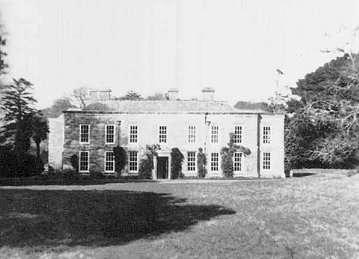
Between Fowey and Par,
PL24 2TN
Tel: (01726) 808150
Web: www.menabilly.com
Famous house of a famous family and a famous author
Menabilly is a historic estate on the south coast of Cornwall, situated within the parish of Tywardreath on the Gribbin peninsula about two miles west of Fowey.
It has been the home of the Rashleigh family from the 16th century to the present day. The mansion house, which received a Grade II listing on 13th March 1951, is early Georgian in style, having been re-built on the site of an earlier Elizabethan house, parts of which were possibly incorporated into the present structure. The house is surrounded by woodland and nearby is the farmhouse Menabilly Barton.
The first house at Menabilly was built by John I Rashleigh (1554–1624), shipowner and MP for Fowey. The house was completed in 1624 by his son Jonathan Rashleigh I (1591–1675) and was re-built between 1710 to 1715 by Jonathan Rashleigh III (1693–1764).
During the Civil War, Menabilly, then one of the finest mansions in Cornwall, was looted and nearly destroyed. Ransacked of all its furniture, livestock and stores, its Royalist owner Jonathan Rashleigh was locked away in St. Mawes Castle. And Menabilly fell into ruin for the first time. The house was rescued and almost entirely rebuilt by its 4th owner Phillip Rashleigh in 1710. Beautiful landscaped gardens full of exotic and rare plants grew up around the fashionable family home. And then just over a hundred years later Menabilly was once more in ruins. This time it was a fire that nearly destroyed the house.
The present house is of two storeys built around a central courtyard with a six-bay front on which the central three bays break forward.
Philip Rashleigh (1729–1811) landscaped the gardens and planted the woodland around the house and estate. William Rashleigh, his nephew, succeeded after Philip's death in 1811, and following a fire in 1822, re-built the house in a greatly extended size.
Jonathan Rashleigh (1820–1905), the cricketer, improved and extended the gardens and grounds and planted many trees including pine, cedar, eucalyptus and beech. He also planted rhododendron, bamboo and hydrangea.
John Rashleigh (1872–1961), grandson of Jonathan, succeeded in 1905 but rarely lived at Menabilly which thus fell into serious decay. In 1943 it was discovered in a dilapidated state by the new tenant Daphne du Maurier the author, who set about restoring it and made it her home before returning it to the Rashleigh family in 1969.
After years of trying Daphne eventually persuaded the Rashleigh family to let her have the lease. The du Maurier family moved in, after some hurried building work, for Christmas 1943. Menabilly became their much-loved home for the next 26 years. Daphne’s daughter Flavia wrote in her biography many years later that the house was always bright and cheerful for the children. They adored the space and freedom it gave. She recalls hearing her mother “tap-tapping on the typewriter in her hut at the end of the lawn” but even before she lived there Menabilly was influencing Daphne’s writing.
The house was the inspiration for "Manderley", the house in Daphne du Maurier's novel Rebecca. Like Menabilly, the fictional Manderley was hidden in woods and could not be seen from the shore. Du Maurier's novel The King's General is also set here and features the skeleton found in the cellar.
Today Menabilly and most of the grounds remain private and not open to the public although two cottages on the estate are rented as holiday lets.
Tucked away amongst trees on the Gribbin Peninsula.
Fowey Castle Dore Gribbin Head Par Golant Daphne du Maurier Polkerris Tywardreath